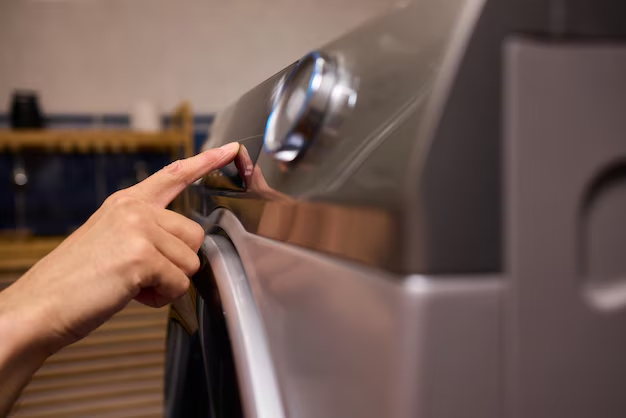Effortlessly Change Your Samsung Refrigerator's Water Filter: A Complete Guide
Has your Samsung refrigerator's water filter alert started blinking? If you're unsure how to tackle this on your own, you're not alone. Many find this small yet crucial task daunting. Yet, it's an essential step in maintaining pure and fresh water from your appliance. This guide will walk you through removing and replacing the water filter in your Samsung refrigerator, ensuring you enjoy clear, tasty water every time.
Why Replacing Your Water Filter Matters
Water filters are pivotal in ensuring that the water and ice dispensed from your refrigerator stay clean and free from unwanted contaminants. Over time, these filters can clog or become ineffective. Replacing them regularly is vital for:
- Health: Clean water can prevent ingestion of harmful bacteria and chemicals.
- Taste: A new filter ensures your water and ice taste fresh.
- Efficiency: A clogged filter can hinder water flow and functionality of your appliance.
Signs It's Time to Change the Filter
Besides the filter light indicator, there are other signs it might be time to replace your water filter:
- Funny Taste or Odor: If your water or ice starts to taste or smell off, it's likely time for a new filter.
- Slow Dispenser Flow: If the water takes forever to fill a glass, a clogged filter might be the issue.
- When in Doubt, Check the Manual: Samsung recommends changing the filter every six months, but always refer to your specific model's manual for guidance.
Locating the Water Filter in Your Samsung Refrigerator
Before diving into removal, identify where your water filter is located. Depending on your model, the filter can be in one of several places:
- Top-Right Corner: Inside the refrigerator section.
- Lower Left Side: Near the bottom of the fridge portion.
- Behind the Vegetable Drawer: In some models, you may need to pull out the veggie drawer to access it.
Preparing for Filter Removal
Before you start, gather the following items for a smooth process:
- Replacement Water Filter: Ensure you have the correct model number.
- Clean Cloth or Paper Towels: For any spills or drips.
- Small Bowl or Tray: To catch potential dripping water.
Safety Tip: It's wise to turn off the water supply leading to your refrigerator before starting. This isn't always necessary, but it can prevent spills. For peace of mind, shut off the valve connected to your appliance.
Step-by-Step Guide to Removing the Filter
1. Locate and Position Yourself Correctly
Open the section of the fridge where the filter resides. Clear any items that may obstruct access.
2. Remove the Old Water Filter
Twist or Pull Out:
- Twist models: Simply grip the filter and twist it counterclockwise. It should be easy. If not, gentle force is typically applicable.
- Pull-out models: Push the release button or lever and then pull the filter out.
Catch Drips: Use a bowl or paper towels to handle any water that drips out after the filter is removed.
3. Check and Clean
Wipe the area around the filter housing with a dry cloth to pick up any residual moisture or dirt.
Installing the New Filter
1. Prep the New Filter
- Remove Packaging: Carefully unwrap the new filter.
- Prime if Necessary: Some filters may require a water flush before inserting. Reference your filter instructions.
2. Insert the New Filter
Align and Insert:
- For twist designs: Align the alignment mark on the filter with the corresponding mark on the filter housing. Gently twist clockwise until it locks in place.
- For push models: Align the filter, push it in until it clicks securely.
Turn on Water Supply: If you turned off the water supply, turn it back on.
Check for Leaks: Inspect around the filter housing to ensure no water leaks out.
3. Reset the Filter Indicator
The filter indicator will often remain on until reset. Reset it to ensure the next reminder is accurate:
- Hold the “Alarm/Filter Reset” button for 3 seconds or until the light turns off. Check your manual for specific instructions for your model.
Frequently Asked Questions
How often should I replace the water filter?
Samsung generally suggests replacing every six months. However, if you have a larger family or use more water, the filter may require more frequent changes.
Can I use non-Samsung filters?
Although third-party filters may seem cost-effective, they can void warranties or cause specific models to malfunction. It’s recommended to use Samsung-approved filters for best performance and assurance.
What if my fridge continues showing the filter light after replacement?
If the indicator light remains on despite a new filter, ensure that the “Filter Reset” process was performed correctly. Double-check your manual if issues persist as some models may have unique reset sequences.
Simple Maintenance Tips for Your Samsung Refrigerator
Maintaining your refrigerator goes beyond replacing the water filter. Here's what you can do for optimal performance:
- Consistently Clean Your Coils: Vacuum the back coils once or twice a year to ensure the cooling system operates optimally.
- Monitor Door Seals: Ensure your fridge is not forced to work harder due to leaks around the door. Clean with a damp cloth, then dry thoroughly.
Handy Summary – Key Points to Remember! 🗒️
- Why Change Filters?: Ensures health, taste, and appliance efficiency.
- Check Location: Verify your filter’s position for easy access.
- Before You Start: Turn off the water supply if desired. Have materials ready.
- Process Recap:
- Twist or pull to remove
- Align and insert the new filter
- Reset the indicator
- Maintenance: Clean coils and check door seals regularly.
- Frequency: Replace every 6 months or as needed.
By taking these steps, you're ensuring your Samsung refrigerator not only provides refreshing, clean water consistently but also maintaining efficient, trouble-free operation. Dive into the process confidently and appreciate the simplicity of keeping your home's key appliance in top form.
